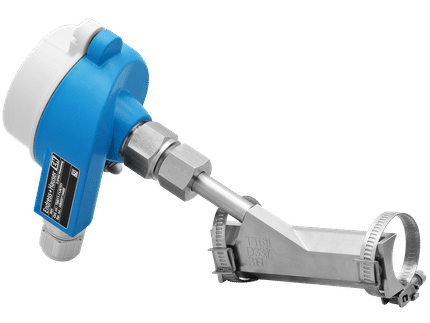Phosphotungstic acid (PTA), tungstophosphoric acid (TPA), is a heteropoly acid with the chemical formula H3P W12O40. It normally present as a hydrate. EPTA is the name of ethanolic phosphotungstic acid, its alcohol solution used in biology. It has the appearance of small, colorless-grayish or slightly yellow-green crystals, with melting point 89 °C (24 H2O hydrate). It is odorless and soluble in water (200 g/100 ml). It is not especially toxic, but is a mild acidic irritant. The compound is known by a variety of different names and acronyms including:-
- Phosphotungstic acid (PTA), (PWA)
- Tungstophosphoric acid (TPA)
- 12-phosphotungstic acid
- 12-tungstophosphoric acid (cited as the IUPAC standard in Cotton and Wilkinson, 2d edition,1966 [1] )
- dodecatungstophosphoric acid
In the above the "12" or "dodeca" reflects the fact that the anion contains 12 tungsten atoms. Some early workers who did not know the structure, e.g. Hsien Wu [2] called it phospho-24-tungstic acid as they formulated it as 3H2O.P2O5 24WO3.59H2O, (P2W24O80H6).29H2O, which correctly identifies the atomic ratios of P, W and O. This formula was still quoted in papers as late as 1970 [3].
Phosphotungstic acid is used in histology as a component for staining of cell specimens, often together with haematoxylin as PTAH. It binds to fibrin, collagen, and fibres of connective tissues, and replaces the anions of dyes from these materials, selectively decoloring them.
Phosphotungstic acid is electron dense, opaque for electrons. It is a common negative stain for viruses, nerves, polysaccharides, and other biological tissue materials for imaging by a transmission electron microscope.
Structure
Gouzerh [4] summarises the historical views on the structure of phosphotungstic acid leading up to Keggins determination of the structure as:
- H7[P(W2O7)6] proposed by Miolati and further developed by Rosenheim
- H3[PO4W12O18(OH)36] (Pauling)
The structure was determined by J.F Keggin first published in 1933 [5]and then in 1934[6] and is generally known as the Keggin structure. The anion has full tetrahedral symmetry and comprises a cage of twelve tungsten atoms linked by oxygen atoms with the phosphorus atom at its centre. The picture below shows the octahedral coordination of oxygen atoms around the tungsten atoms, and that the surface of the anion has both bridging and terminal oxygen atoms. Further investigation showed that the compound was a hexahydrate not a pentahydrate as Keggin had proposed. [7]
Preparation and chemical properties
Phosphotungstic acid can be prepared by the reaction of sodium tungstate, Na2WO4.2H2O, with phosphoric acid, H3PO4, acidified with hydrochloric acid, HCl[2].
Phosphotungstic acid solutions decompose as the pH is increased. A step-wise decomposition has been determined and the approximate compositions at various pH values are as follows[8]
| pH | principal components
|
| 1.0 | [PW12O40]3−
|
| 2.2 | [PW12O40]3−, [P2W21O71]6−, [PW11O39]7−
|
| 3.5 | [PW12O40]3−, [P2W21O71]6−, [PW11O39]7−, [P2W18O62]6−, [P2W19O67]10−
|
| 5.4 | [P2W21O71]6−, [PW11O39]7−, [P2W18O62]6−
|
| 7.3 | [[PW9O34]9−
|
| 8.3 | PO43−, WO42−
|
The species [PW11O39]7− is a lacunary, or defect keggin ion. The [P2W18O62]6− has a Dawson structure. At pH less than 8 the presence of ethanol or acetone stabilises the anion, [PW12O40]3−, reducing decomposition[8].
Tungstophosphoric acid is thermally stable up to 400°C, and is more stable than the analogous silicotungstic acid, H4SiW12O40[9].
Large quantities of polar molecules such as pyridine are absorbed into the bulk phase and not simply on the surface. Solid state NMR studies of ethanol absorbed in the bulk phase show that both protonated dimers, ((C2H5OH)2H+) and monomers, (C2H5OH2+) are present.
Phosphotungstic acid is less sensitive to reduction than phosphomolybdic acid. Reduction with uric acid or iron(II) sulfate produces a brown coloured compound. the related silicotungstic acid when reduced forms a similar brown compound where one of the four W3 units in the keggin structure becomes a metal-metal bonded cluster of three edge shared W(IV) octahedra. [10].
Phosphotungstic acid is the strongest of heteropolyacids. Its conjugate base is the PW12O403− anion. [1]. Its acidity in acetic acid has been investigated and shows that the three protons dissociate independently rather than sequentially, and the acid sites are of the same strength[11]. One estimate of the acidity is that the solid has an acidity stronger than H0 = −13.16[9], which would qualify the compound as a super acid. This acidic strength means that even at low pH the acid is fully dissociated.
Uses
Catalyst
In common with the other heteropolyacids phosphotungstic acid is a catalyst and its high acidity and thermal stability make it a catalyst of choice according to some researchers [12]. It is in solution as a homogeneous catalyst, and as a heterogeneous catalyst "supported" on a substrate e.g. alumina, silica. Some acid catalysed reactions include:
Dyeing and pigments
Phosphotungstic acid has been used to precipitate different types of dyes as "lakes"[13]. Examples are basic dyes and triphenylmethane dyes, e.g. pararosaniline derivatives[14].
Histology
Phosphotungstic acid is used in histology for staining specimens, as a component of phosphotungstic acid haematoxylin, PTAH, and “trichrome” reagents, and as a negative stain for imaging by a transmission electron microscope.
- Phosphotungstic acid haematoxylin
- Mallory described the reagent now generally known as PTAH in 1897[15]. PTAH stains tissues either reddish brown or blue depending on their type. This property of simultaneously staining two different colours is different from other haematoxylin reagents e.g. alum-haematoxylin. The role of phosphotungstic acid and the mechanism of staining is not fully understood. Interestingly the active component of haematoxylin is the oxidised form, haematin, although this rarely acknowledged in the literature which refer to haematoxylin staining. Phosphotungstic acid forms a lake with haematin[16]. The make –up of the reagent is uncertain, examination of a year old sample showed there to be three coloured components, blue, red and yellow. [17]. These were not identified. Some investigations of “model” systems, reacting various compounds e.g. amino acids, purines, pyrimidines and amines. with PTAH show that they give rise to different colours[18].
- Trichrome reagents
- In these reagents two or three basic dyes are used with phosphotungstic acid, in either a one step or multi-stage procedure. These reagents colour different tissue types different colours. Again the mechanism of staining is not fully understood. Some explanations include the proposal that phosphotungstic acid acts as a mordant to bind the dye to the tissue[19] or that alternatively it binds to tissue blocking it to dye molecules[20].
- Negative staining
- Adsorption onto tissue or the surface of viruses and its electron density are the bases of phosphotungstic acids action as a negative stain. This electron density arises from the presence of the 12 tungsten atoms which each have an atomic number of 74. The mechanism of the adsorption onto tissue has been proposed as being electrostatic rather than involving hydrogen bonding, as adsorption is not affected by pH[3] .
Analysis
The potassium salt is only slightly soluble, unlike most other phosphotungstate salts, and has been proposed as a method for the gravimetric analysis of potassium.[21]
Precipitation of proteins
In a number of analytical procedures one of the roles of phosphotungstic acid is to precipitate out proteins. It has been termed a "universal" precipitant for polar proteins[22]. Further studies showed that no precipitation occurred with α-amino groups but did occur with guanidino, ε-amino and imidazole groups.[23]
Medicinal
Very little work appears to have been carried out in in this area. One example relates to liver necrosis in rats[24]
Composite proton exchange membranes
The heteropoly acids, including phosphotungstic acid, are being investigated as materials in composite proton exchange membranes, such as Nafion. The interest lies in the potential of these composite materials in the manufacture of fuel cells as they have improved operating characteristics.[25]
References
- ^ Cotton, F. Albert; Wilkinson, Geoffrey (1966). Advanced Inorganic Chemistry (2d Edn.). New York:Wiley.
- ^ a b Contribution to the chemistry of phosphomolybdic acids, phosphotungstic acids and allied substances H Wu The Journal of Biological Chemistry 43, 1, (1920), 189
- ^ a b On phosphotungstic staining, I G Quintarelli, R Zito, J.A Cifonelli The Journal of Histochemistry and Cytochemistry 19, 11, (1971, 641
- ^ From Scheele and Berzelius to Müller: polyoxometalates (POMs) revisited and the "missing link" between the bottom up and top down approaches P. Gouzerh, M. Che; L’Actualité Chimique, 2006, 298, 9
- ^ Structure of the Molecule of 12-Phosphotungstic Acid J. F. Keggin, Nature 1933, 131, 908.
- ^ The Structure and Formula of 12-Phosphotungstic Acid J.F. Keggin. Proc. Roy. Soc., A, 144, 851, 75-100 (1934) doi:10.1098/rspa.1934.0035
- ^ Dodecatungstophosphoric acid hexahydrate, (H5O2+)3(PW12O403−). The true structure of Keggin's `pentahydrate' from single-crystal X-ray and neutron diffraction data Brown G.M., Noe-Spirlet M.-R., Busing W.R., Levy H.A., Acta Crystallogr., 1977, B33, 1038 doi:10.1107/S0567740877005330
- ^ a b A study of the decomposition behaviour of 12-tungstophosphate heteropolyacid in solution Zhu Z., Tain R., Rhodes C. Canadian Journal of Chemistry, 81,10, 1, (2003) , 1044-1050
- ^ a b Oxide catalysts in solid state chemistry T Okuhara, M Misono Encyclopedia of Inorganic chemistry Editor R Bruce King (1994) John Wiley and Sons ISBN 0471 93620 0
- ^ Polyoxoanions M.T.Pope, Encyclopedia of Inorganic Chemistry Editor R Bruce King (1994) John Wiley and Sons ISBN 0471 93620 0
- ^ Acidity measurements on a heteropolyacid hydrate in acetic acid solution : a case of three hydrons ionizing independently, rather than consecutively Farcasiu D. ; Jing Qi Li ; Journal of Catalysis 1995, 152, 1, 198-203
- ^ Zirconia-supported 12-tungstophosphoric acid as a solid catalyst for the synthesis of linear alkyl benzenesBiju M. Devassy, F. Lefebvre and S.B. Halligudi, Journal of Catalysis 231,1,(2005),1-10 doi:10.1016/j.jcat.2004.09.024
- ^ Non-staining pigments and their use US patent: 2999026 Issue date: Sep 1961, Inventor: Chester Davis
- ^ Pigments, Organic K Hunger, W Herbst Ullmans Encyclopedia of Industrial Chemistry
- ^ On certain improvements in histological technique: I. A differential stain for amoeligbæ coli. II. phosphotungstic-acid-hæmatoxylin stain for certain tissue elements. III. A method of fixation for neuroglia fibres. F. B. Mallory J. Exp. Med., 2, 5, (1897) 529-533
- ^ Phosphotungstic acid- hematoxylin; spectrophotometry of the lake in solution and in stained tissue Terner JY, Gurland J, Gaer F. Stain Technol (1964),39, 141-53
- ^ On the mechanism of Mallory's phosphotungstic acid - haematoxylin stain Puchtler H, Waldrop FS, Meloan S.N. J Microsc 1980, 119, 3, 383
- ^ Phosphotungstic acid-hematoxylin. Reactivity in vitro J. Y. Terner Journal of Histochemistry and Cytochemistry, 1966, 4, 345
- ^ Dyes and other colorants in microtechnique and biomedical research J A Kiernan Color. Technol. 122, 1–21 doi:10.1111/j.1478-4408.2006.00009.x
- ^ The role of phosphotungstic and phosphomolybdic acids in connective tissue staining I. Histochemical studies M.M. Everett and W.A. Miller The Histochemical Journal, 6, 1, (1974), 25-34 , doi:10.1007/BF01011535
- ^ Gravimetric determination of potassium as phospho-12-tungstate W.K. Rieben, D.D. Van Slyke, Journal of Biological Chemistry, 156, (1944), 2, 765
- ^ Phosphotungstate: a" universal" (nonspecific) precipitant for polar polymers in acid solution JE Scott - Journal of Histochemistry and Cytochemistry, 197119, 11, 689
- ^ Precipitation of proteins: The separation of proteins with heteropolyacids M. Z. Sternberg, Biotechnology and Bioengineering 12, 1, (1970), 1 - 17
- ^ Protective effects of tungstophosphoric acid and sodium tungstate on chemically induced liver necrosis in Wistar rats Snežana Uskoković-Marković1, Marina Milenković, Aleksandra Topić, Jelena Kotur-Stevuljević, Aleksandra Stefanović, Jelena Antić-Stanković, J Pharm Pharmaceut Sci 10 (3): 340-349, 2007
- ^ Composite membranes for medium temperature PEM fuel cells G. Alberti and M. Casciola Annual Review of Materials Research 33, (2003), 129-154 doi:10.1146/annurev.matsci.33.022702.154702
|







